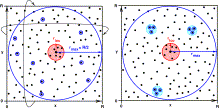|
Copyright © 2010 Elsevier Ltd All rights reserved. |
 Permissions & Reprints Permissions & Reprints |
Abstract
Most current computational models of neocortical networks assume a homogeneous and isotropic arrangement of local synaptic couplings between neurons. Sparse, recurrent connectivity is typically implemented with simple statistical wiring rules. For spatially extended networks, however, such random graph models are inadequate because they ignore the traits of neuron geometry, most notably various distance dependent features of horizontal connectivity. It is to be expected that such non-random structural attributes have a great impact, both on the spatio-temporal activity dynamics and on the biological function of neocortical networks. Here we review the neuroanatomical literature describing long-range horizontal connectivity in the neocortex over distances of up to eight millimeters, in various cortical areas and mammalian species. We extract the main common features from these data to allow for improved models of large-scale cortical networks. Such models include, next to short-range neighborhood coupling, also long-range patchy connections.
We show that despite the large variability in published neuroanatomical data it is reasonable to design a generic model which generalizes over different cortical areas and mammalian species. Later on, we critically discuss this generalization, and we describe some examples of how to specify the model in order to adapt it to specific properties of particular cortical areas or species.
Keywords: Cortical network; Distant synapses; Patchy projections
Article Outline
- 1.
- Introduction
- 2.
- A model of horizontal cortical connectivity
- 2.1. Working assumptions
- 2.2. The generalized computational network model
- 3.
- Neuroanatomical basis of the model
- 3.1. Local connections
- 3.2. Intrinsic horizontal distant connections
- 3.2.4. Quantitative data on patches
- 3.2.4.1. Size of the patches
- 3.2.4.2. Lateral distance from a patch to the cell body
- 3.2.4.3. Number of patches
- 4.
- Validity and specifications of the generalized model
- 4.1. Cortical hierarchy and patches
- 4.2. Model validity with respect to different species
- 5.
- Discussion
- 5.1. Basic spatial settings and local connections
- 5.2. Patches and single-cell data
- 5.3. Patches and group data
- 5.4. What we did not include
- 6.
- Conclusions
 Corresponding
author at: INSERM U751 – Université Aix-Marseille, Faculté de Médecine
La Timone, 27 Bd Jean Moulin, 13385 Marseille Cedex 05, France. Tel.:
+33 491 29 98 13; fax: +33 491 78 99 14.
Corresponding
author at: INSERM U751 – Université Aix-Marseille, Faculté de Médecine
La Timone, 27 Bd Jean Moulin, 13385 Marseille Cedex 05, France. Tel.:
+33 491 29 98 13; fax: +33 491 78 99 14. 


























